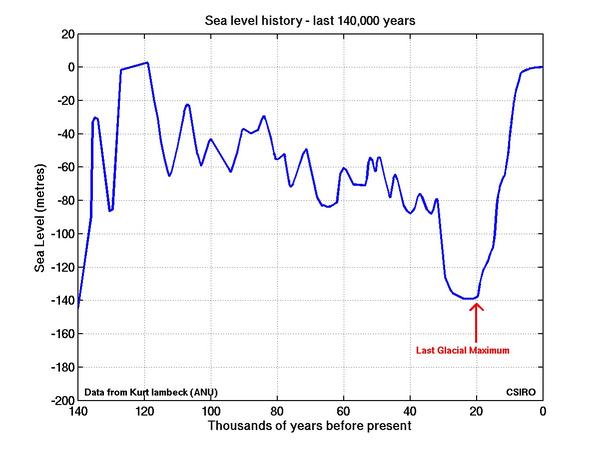| Sea Level Rise Last 140,000 years |  | Sea level varied by over 100 metres during glacial-interglacial cycles as the major ice sheets waxed and waned as a result of changes in summer solar radiation in high northern hemisphere latitudes. Paleo data from corals indicate that sea level was 4 to 6 m (or more) above present day sea levels during the last interglacial period, about 125 000 years ago. Climate and ice-sheet model simulations indicate that Greenland was about 3°C warmer than today and that the Northern Hemisphere ice sheets contributed 2.2 to 3.4 metres to the higher sea level, with the majority of the rise coming from the partial melting of the Greenland ice sheet.
During the last ice age, sea level fell to more than 120 metres below present day sea level as water was stored in ice sheets in North America (Laurentian, Cordilleran), Greenland, northern Europe (Fennoscandia and the Barents region) and Antarctica. As the ice melted, starting around 20 000 years ago, sea level rose rapidly at average rates of about 10 mm per year (1 m per century), and with peak rates of the order of 40 mm per year (4 m per century), until about 6000 years ago. | | URL: http://www.cmar.csiro.au/sealevel/sl_hist_intro.html
(The text for the image(s) on this Web page was taken from the above source.) |
|